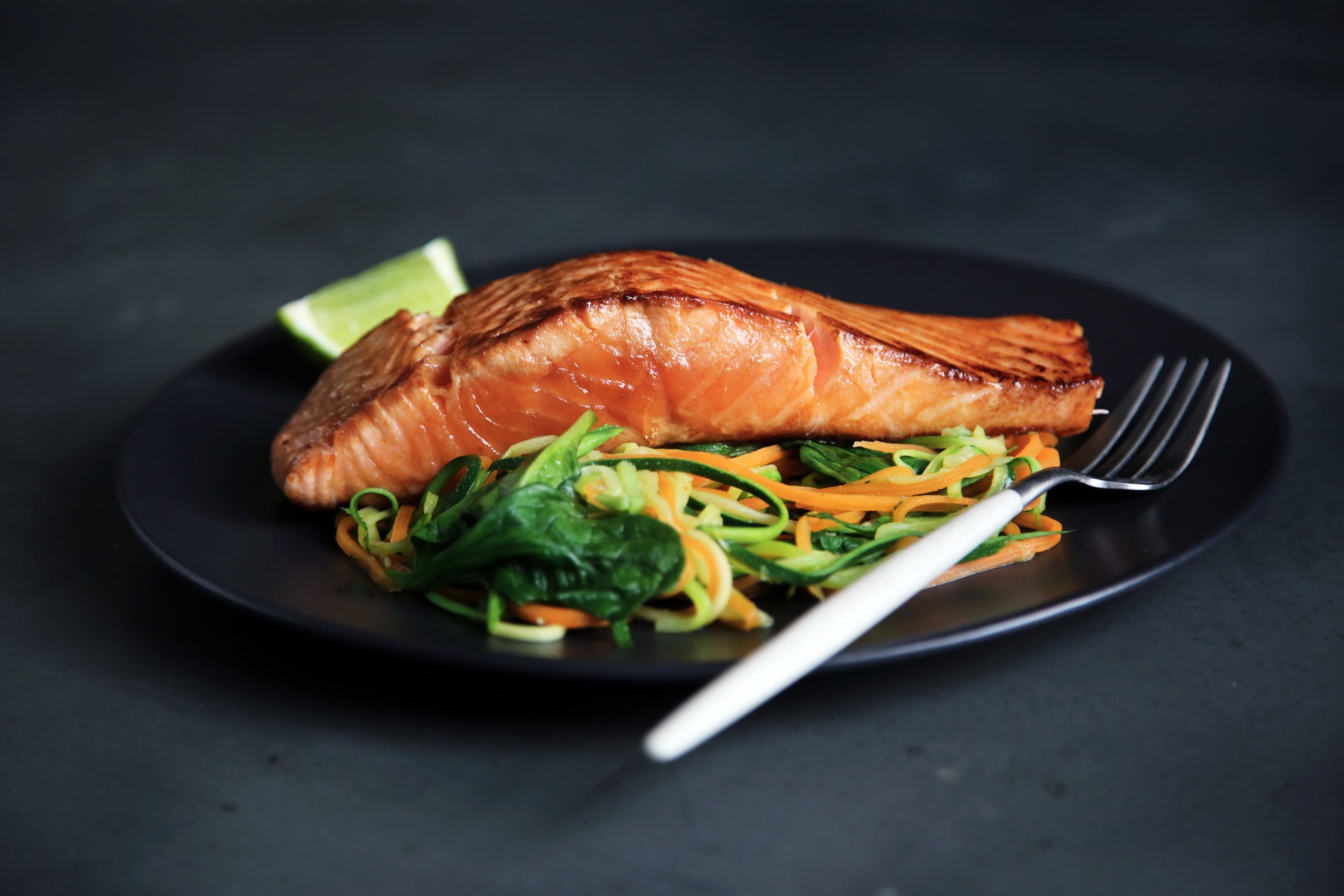Have you ever wondered if you should be tracking your macro nutrients to achieve your body goals? For the longest time, my answer as a fitness professional and in my own health journey was a hard no. There are basically two main options that are well known when trying to be conscious about how much food you are consuming:
Intuitive eating – listening to your body and giving it clean whole foods as needed
or
IIFYM (if it fits your macros) – every bite of food is tracked daily, and pretty much any type of food, good or bad, is fair game so long as it stays within your personalized macro-nutrient range
Neither of these really worked for me. If I “listened to my body”, I’d end up eating the entire kitchen. Because most of us, myself included, simply aren’t good at knowing when we are actually hungry, or when we are just bored/emotional. On the other hand, keeping up with constantly tracking food isn’t sustainable for the average person, and it didn’t last more than a few days for me. Was I going to have to count my calories forever? What about when I went out to eat? I want to enjoy the experience and company, not obsess over food in MyFitnessPal. There is also a problem with judging if a food is good or bad based on its caloric value alone. Eating 3 Twinkies a day might fit in your macros because they’re only 150 calories each and you have calories to spare for the day, but that’s not really serving your body. Pay attention to the food’s nutritional value, not just caloric. The vitamins and minerals each food provides to fuel your body are as important as the calories.
Another problem with tracking calories in vs calories out (caloric expenditure) is that it leads people to think they need to work out as much as possible and eat as little as possible. For most of us, this leads to a pattern of overtraining and disordered eating. Your body doesn’t look the way you want it to because it isn’t working properly and performing optimally… tracking and cutting calories is a short-term fix and isn’t going to heal your metabolism, which is what needs to happen for long term weight loss and HEALTH. So, what should you do? Find a happy medium. Focus on eating unpackaged, unprocessed healthful foods, and a balance of healthy fats, carbs, and quality protein. I do recommend keeping a food journal for a few weeks to hold yourself accountable. Pay attention to how certain foods make you feel and become aware of the general caloric value of the whole foods you eat. Loosely track your food for a few days a week (or once a week if you meal prep) so you are broadly aware of how much you are eating, but don’t obsess over it- especially when out to dinner with friends or family. Allow yourself treats on special occasions, but avoid making junk food a main staple in your diet.
Roughly tracking your macros can give you a better understanding of nutrition, and also a better understanding of your body and how it responds to food. I found that I was WAY off with my estimation of how many calories I was eating and not getting enough protein to fuel my body and build muscle while burning fat. Some days, I was down on myself because I thought for sure that I had overeaten, when I really was under my calorie range. Tracking alleviated me of guilt, because I was in control instead of guessing and hoping.
I’ve also found it helpful to eat with the seasons and use them to help reach my fitness goals. In the winter and fall months, eat bigger portions of healthy calorie dense foods (think grounding and warming foods that you naturally crave in the colder months like hearty soups and oatmeal). Add a sprinkle of hemp hearts or chia seeds to each meal and allow yourself that extra healthy sweet treat. Use your energy surplus to kill it in the gym and pack on muscle (aka “bulking”). Adding muscle usually means adding size and weight, so just be ready for that and make sure it’s the good kind!
As it starts to warm up in the spring and summer, focus on eating lighter, cooling foods (lots of well put together salads) and keep your portion sizes just a little smaller. Find ways to cut calories without your mind noticing, using 3/4s of your usual serving of calorie dense foods like healthy fats. Replace 1/4 of starches like rice and potatoes with extra vegetables. Instead of using only almond milk for smoothies, cut half of the liquid content with water. Keep pushing yourself in the gym but listen to your body, and don’t be surprised if you need to dial it back just a little while your body isn’t in as big of a caloric surplus (aka “cutting”). The goal is to trim down and expose the muscle built during your winter bulk while maintaining as much of it as possible.
Listen to your body and use some self-experimentation to build a plan that is sustainable for you. Everyone’s body is different, and just because a certain “diet” worked for someone else, doesn’t mean that your body will respond the same way. Correlation does not always equal causation. In the end, being happy, healthy, AND feeling good are what is most important.














